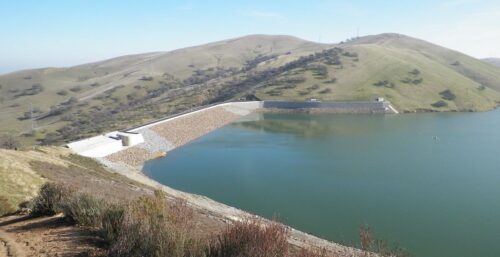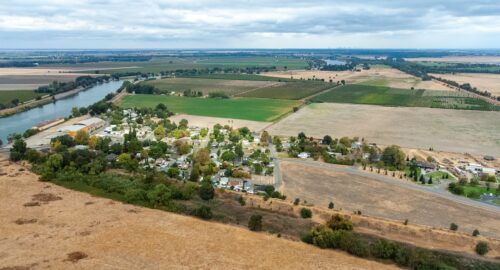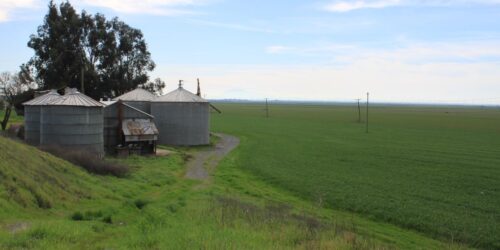A wrap-up of posts published on Maven’s Notebook this week …
Note to readers: Sign up for weekly email service and you will receive notification of this post on Friday mornings. Readers on daily email service can add weekly email service by updating their subscription preferences. Click here to sign up!
This week’s featured articles …
CA WATER COMMISSION: Update on Water Storage Investment Program contracts for public benefits

At the September meeting of the California Water Commission, staff briefed commissioners on the Water Storage Investment Program and the contracts for public benefits.
Through the Water Storage Investment Program, the California Water Commission will invest nearly $2.6 billion in the public benefits of water storage projects. The legislation defines the public benefits as ecosystem, water quality, emergency response, flood, and recreation. Seven projects were selected and are progressing through the program: three surface storage projects and four groundwater projects.
Click here to read this article.
GUEST COMMENTARY: SGMA is Failing. Time to Fix It

Guest commentary by Michael DeLapa, executive director of LandWatch Monterey County, and Chelsea Tu, executive director of Monterey Waterkeeper
In 2014 California finally joined other western states by enacting groundwater management legislation. The Sustainable Groundwater Management Act (SGMA) requires local governments to produce plans to bring overdrafted groundwater basins into balance within 20 years. But in Monterey County, SMGA is failing. Over-pumping continues to degrade aquifers essential to agriculture and thousands of urban users.
Click here to read this commentary.
GUEST COMMENTARY: America Has a Flushing Problem – We’re Focused on Fixing It.
 Commentary by Lara Wyss, the President of the Responsible Flushing Alliance
Commentary by Lara Wyss, the President of the Responsible Flushing Alliance
Cosmetic wipes, cotton balls, feminine products, kitty litter and even hot dogs – these are some of the items that have been found in California wastewater systems, many of which are sent down the drain via a simple flush of the toilet. America has a major flushing problem that’s costing taxpayers millions and putting the health of our environment, waterways, and communities at risk.
A new alliance of strange bedfellows has come together to help solve the problem, starting with addressing how we think about what we toss in the toilet.
Click here to read this guest commentary.
In California water news this week …
Atmospheric rivers will hit the West Coast next week. Will rains reach California?
 “Back-to-back atmospheric rivers are expected to bring 3 to 6 inches of precipitation to parts of the Pacific Northwest through the middle of next week. But is the storm system going to make it all the way to California? Not exactly, Newsroom Meteorologist Gerry Díaz said, but the remnants of the atmospheric river means the Bay Area will likely see rain next week. Díaz compared moisture from an atmospheric river to gasoline. “You’re filling up your car at a gas station – that gas is the atmospheric river and the car engine is the storm itself,” Diaz said. “Eureka, Redding … the storm will have plenty of fuel to work with up there, but as it starts moving toward the Bay Area the atmospheric river will have less and less fuel.” Rain that reaches San Francisco will be due to a more familiar type of weather system. ... ” Read more from the San Francisco Chronicle here: Atmospheric rivers will hit the West Coast next week. Will rains reach California?
“Back-to-back atmospheric rivers are expected to bring 3 to 6 inches of precipitation to parts of the Pacific Northwest through the middle of next week. But is the storm system going to make it all the way to California? Not exactly, Newsroom Meteorologist Gerry Díaz said, but the remnants of the atmospheric river means the Bay Area will likely see rain next week. Díaz compared moisture from an atmospheric river to gasoline. “You’re filling up your car at a gas station – that gas is the atmospheric river and the car engine is the storm itself,” Diaz said. “Eureka, Redding … the storm will have plenty of fuel to work with up there, but as it starts moving toward the Bay Area the atmospheric river will have less and less fuel.” Rain that reaches San Francisco will be due to a more familiar type of weather system. ... ” Read more from the San Francisco Chronicle here: Atmospheric rivers will hit the West Coast next week. Will rains reach California?
SEE ALSO: CW3E AR Update: 26 October 2022 Outlook: Multiple Atmospheric Rivers to Bring Precipitation to the Pacific Northwest, from the Center for Western Weather & Water Extremes
As state seeks water lifeline with Delta Tunnel, small Delta town remains concerned

“California has long had a mismatch. “Where the water falls and where the people are. Much of the water, about two-thirds, fall in the Sierra Nevada, but most of the population is in the Central Valley, the Bay Area, along the coast or in Southern California,” said Carrie Buckman, Environmental Program Manager with Delta Conveyance. In addition to climate change, less and less water is falling overall, and the mismatch becomes a crisis. Trying to balance those needs has California’s Department of Water Resources seeking a water lifeline. “To store water when it’s available and deliver it to them when they need it,” Buckman said. Pushing a pipeline plan, like the Delta Conveyance project, on many different occasions seemed dead in the water. … ” Read more from KTXL here: As state seeks water lifeline with Delta Tunnel, small Delta town remains concerned
Environmental groups push for increased river flow in wake of Delta algal bloom
“The destructive algal bloom that struck San Francisco Bay this summer has researchers looking at both causes and solutions. But now, several environmental groups are demanding action on a similar challenge miles upstream from the Bay. They’re focused on a toxic bloom that’s become almost a yearly occurrence in and around the Delta. “And it produces a toxin that’s acutely poisonous to people and their pets. So this, this will kill your dog if it gets exposed to enough of it and can make people very sick if they come in contact with a water, but also the toxins and the cyanobacterial cells get aerosolized in a heavy wind. So it makes it sort of a hazard even if you’re walking near the waterway, explains Jon Rosenfield, senior scientist with San Francisco Baykeeper. … ” Read more from ABC 7 here: Environmental groups push for increased river flow in wake of Delta algal bloom
California water agencies, farmers work together to conserve water in the Delta
 “Alex Wilson is a sixth-generation California farmer, growing fruits and grain in a state that has been severely affected by an ongoing water shortage. At 27, he is the youngest member to continue the family tradition of farming in the Sacramento-San Joaquin Delta region. Through the years, Wilson’s family has survived periods of drought and flooding while growing pears, cherries, tomatoes, wheat, alfalfa, and other crops on their 4,000 acres in Yolo, Sacramento, and San Joaquin counties. This year, the family found another way to help conserve water through the state-funded Delta Drought Response Pilot Project. “I saw an email that had come out where the state was basically willing to pay a farmer not to irrigate,” Wilson said. “It kind of caught my attention.” … ” Read more from the Epoch Times here (free registration may be required): California water agencies, farmers work together to conserve water in the Delta
“Alex Wilson is a sixth-generation California farmer, growing fruits and grain in a state that has been severely affected by an ongoing water shortage. At 27, he is the youngest member to continue the family tradition of farming in the Sacramento-San Joaquin Delta region. Through the years, Wilson’s family has survived periods of drought and flooding while growing pears, cherries, tomatoes, wheat, alfalfa, and other crops on their 4,000 acres in Yolo, Sacramento, and San Joaquin counties. This year, the family found another way to help conserve water through the state-funded Delta Drought Response Pilot Project. “I saw an email that had come out where the state was basically willing to pay a farmer not to irrigate,” Wilson said. “It kind of caught my attention.” … ” Read more from the Epoch Times here (free registration may be required): California water agencies, farmers work together to conserve water in the Delta
Too few Chinook salmon returning to spawn in low, warm Central Valley conditions this fall
“The number of fall-run Chinook salmon returning to federal and state fish hatcheries this season confirm what anglers have seen on the Sacramento, Feather and American rivers – relatively low numbers of fish have come back to spawn in the low and warm conditions. With the exception of some good days at the mouth of the American River and at the Barge Hole on the Sacramento River, fishing has been tough on all three rivers since the salmon season opened on July 16. The one bright spot has been the lower Mokelumne River, where anglers have been catching lots of salmon lately. … ” Read more from the Stockton Record here: Too few Chinook salmon returning to spawn in low, warm Central Valley conditions this fall
Building with nature: Can reviving a marsh save this California town from sea level rise?
“Standing on the edge of a repurposed marina, at the end of a long wooden walkway that harked back to more prosperous times, Brenda Buxton took in the disorienting landscape. Directly before her were the remnants of an industrialized, salt-encrusted pond that stretched for what felt like miles. Here along the southernmost edges of San Francisco Bay, the water glimmered a strange tinge of red. Its flatness belied the threat of rising seas. It’s painful, Buxton finally said out loud, to realize just how long it can take to revive ecosystems left so ruined but critical to our survival. Therein lies the crux of the largest, most ambitious tidal wetland restoration project west of the Mississippi, an effort that has gone on for so long that most people today have forgotten it exists. … ” Read more from the LA Times here: Building with nature: Can reviving a marsh save this California town from sea level rise?
Valley can expect heavy rain amid climate change. Irrigation district aims to capture some
“The Turlock Irrigation District will help test a new approach to recharging the groundwater underneath farmland. The trial will take place at two almond orchards in the Ballico area of Merced County. TID will wait for good-size rainstorms, hopefully as soon as this autumn, and divert the runoff to the farms via a canal idled at the end of irrigation season. The project is one of several aimed at boosting Central Valley aquifers, overseen by the California Department of Water Resources. TID is partnering on the project with Sustainable Conservation, a nonprofit that works with farms and other businesses around the state. “Recharge has a great potential to help buffer the effects of drought,” said Aysha Massell, a program director for the group, during a Zoom briefing for the TID board Tuesday. “It can’t solve everything in our groundwater overdraft problem, but it’s definitely a very important tool in our tool belt.” … ” Read more from the Modesto Bee here: Valley can expect heavy rain amid climate change. Irrigation district aims to capture some
Here’s why the desalination plant in Doheny was approved and Huntington Beach’s wasn’t
“Earlier this month, the California Coastal Commission approved plans for a desalination plant near Doheny State Beach. In May, the commission voted against a plant in Huntington Beach. Today we look at the differences. The greenlighted $140 million desalination plant in south Orange County’s city of Dana Point includes technology preferred by environmentalists and regulators and could provide up to 5 million gallons per day. Unlike the rejected $1.4 billion plant in Huntington Beach, the Doheny Ocean Desalination project location has unique hydrogeology that allows advanced slant wells (shown in graphics on the right) to draw water from beneath the ocean floor to protect marine life. ... ” Read more from the Long Beach Press Telegram here: Here’s why the desalination plant in Doheny was approved and Huntington Beach’s wasn’t
As drought drives prices higher, millions of Californians struggle to pay for water
“Several months ago, Rosario Rodriguez faced a financial dilemma that has become all too common for millions of drought-weary Californians — either pay the electric bill, which had skyrocketed to about $300 during a scorching summer in western Fresno County, or pay the $220 combined water, sewer and trash bill. “Our water is expensive, even though we can’t drink it because it’s contaminated,” Rodriguez said in Spanish. In the end, Rodriguez opted not to pay the electric bill from May to July, knowing she could get help from the Fresno Economic Opportunities Commission, a local nonprofit. No such assistance that she knew of was available for water, however. For a family of four living off $25,000 a year, a water bill of more than $200 a month is an economic burden. Now, with 1 in 10 California households falling into arrears on water payments, calls are mounting for the state to step in and help. … ” Read more from the LA Times here: As drought drives prices higher, millions of Californians struggle to pay for water
California warns water agencies over shutoffs amid higher prices, missed payments
 “The California Department of Justice on Wednesday issued a “legal alert” intended to help protect people from water shutoffs as the state continues to struggle with drought, rising prices and the lingering economic effects of the COVID-19 pandemic. State Attorney General Rob Bonta said he issued the alert partly as a response to an estimated 40% increase in the price of certain types of water transactions so far this year and the fact that roughly 1.6 million Californians have fallen behind on their payments as of January 2021. “Many families here in our state can’t pour a glass of water, can’t wash their hands, can’t even flush their toilets,” Bonda said during a press conference Wednesday. “All because they can’t make their water payments and are facing plummeting credit scores.” … ” Read more from CBS Bay Area here: California warns water agencies over shutoffs amid higher prices, missed payments
“The California Department of Justice on Wednesday issued a “legal alert” intended to help protect people from water shutoffs as the state continues to struggle with drought, rising prices and the lingering economic effects of the COVID-19 pandemic. State Attorney General Rob Bonta said he issued the alert partly as a response to an estimated 40% increase in the price of certain types of water transactions so far this year and the fact that roughly 1.6 million Californians have fallen behind on their payments as of January 2021. “Many families here in our state can’t pour a glass of water, can’t wash their hands, can’t even flush their toilets,” Bonda said during a press conference Wednesday. “All because they can’t make their water payments and are facing plummeting credit scores.” … ” Read more from CBS Bay Area here: California warns water agencies over shutoffs amid higher prices, missed payments
Further increases to water fees ‘reprehensible’
“The State Water Resources Control Board (SWRCB) has moved forward with a proposal to further increase water fees for several programs. President and CEO of the Western Agricultural Processors Association (WAPA), Roger Isom described the action as “reprehensible.” Despite opposition from several agricultural groups, SWRCB is going ahead with a series of fee increases to cover salary and benefit expenditure increases of four percent for at least the next three years. “Whether it’s waste discharge fees for food processors or your irrigated lands fees, it’s a minimum of four percent. Some of them are as high as a seven percent increase this year for those fees to discharge water,” said Isom. “It’s gone up for I don’t know how many years running. It’s built-in now despite every effort we’ve made to try to reign those fees in.” ... ” Read more from Ag Net West here: Further increases to water fees ‘reprehensible’
California tree carnage: A decade of drought and fire killed a third of Sierra Nevada forests
“Admirers of California’s Sierra Nevada mountains are familiar with the swaths of blackened trees flanking its sprawling green forest ranges. A new UC Berkeley study quantifies that devastation, finding nearly a third of southern Sierra conifer forests have died in the last decade. California has seen devastating bouts of drought and record-breaking wildfire events in the last several years. From 2011-2020, a combination of fire, drought and drought-related bark beetle infestations killed 30% of forests in the Sierra Nevada mountain range between Lake Tahoe and Kern County, according to the analysis. “It’s kind of a wake up call, even to those of us that are kind of steeped in this field,” said Zackary Steel, lead author of the study. “We’re moving from knowing this is a problem to quantifying the problem.” … ” Read more from the Sacramento Bee here: California tree carnage: A decade of drought and fire killed a third of Sierra Nevada forests
In commentary this week …
How California can expand solar development and support San Joaquin Valley farmers
Andrew Ayres, a research fellow at the Public Policy Institute of California Water Policy Center, and Darcy Wheeles, a Principal at ArkSpring Consulting, writes, “California’s largest farming region faces a daunting challenge. As the state adapts its groundwater basins under the Sustainable Groundwater Management Act, the San Joaquin Valley will have to shrink its footprint. The Public Policy Institute of California estimates that at least 500,000 acres of farmland will likely need to come out of production over the next two decades. Fallowing land can lead to a host of problems, including employment losses for the valley’s agricultural workers and revenue losses for landowners and local governments. It could also exacerbate issues with airborne dust in a region already suffering from some of the worst air quality in the nation. And pests and weeds could cause a nuisance for lands still in production. ... ” Read more from Cal Matters here: How California can expand solar development and support San Joaquin Valley farmers
Delta Flows: Working for a healed future, despite a broken past
Barbara Barrigan-Parilla writes, “On October 13th and 14th, Restore the Delta held its two-day symposium featuring next generation Delta leaders. … Not only were these panels filled with researched, professional and accurate commentary, but the participants revealed what they want to see for the future of the estuary and within their Delta communities. We need to acknowledge that the Delta’s youth represent those who will be living with Delta management decisions today, and leaders from government and NGOs truly have a responsibility to keep their interests in the forefront of their daily work.The first panel found that current state sponsored climate programs like the Transformative Community Climate Program and the California Resource Agency’s 30×30 Program, while a good start, do not address the full climate adaptation needs of the Delta. ... ” Read more from Restore the Delta here: Delta Flows: Working for a healed future, despite a broken past
On the Public Record: Two lovely things.
“I am sincerely enjoying the work coming from women academics younger than me, demonstrating that mainstays of California water management are pretty well bullshit. … You know what else has been wonderful? It isn’t in Water; it is over in Housing. Friends, if you are not following the saga of the Builders Remedy, it is absolutely delightful. It is also a lesson about the importance of changing the BATNA. More or less, it goes like this. … ” Read the full post from On the Public Record here: On the Public Record: Two lovely things.
Editorial: Desal plant rightly gets the green light
The Southern California News Group editorial board writes, “With another drought parching Southern California, we commend the California Coastal Commission for unanimously approving a new desalination plant off the coast of Dana Point. “We believe that the project before you today, although not perfect, provides a solid example that we can use in planning for future desalination,” advised Kate Huckelbridge, senior environmental scientist at the commission, before its vote. The Southern California News Group reported, “South Coast Water District, the Laguna Beach-based agency developing the project, still needs to hammer out complex agreements with potential water agency partners before an estimated three-year construction process can begin.” … ” Read more from the OC Register here: Editorial: Desal plant rightly gets the green light
Fate of the Los Angeles river epitomizes the choices facing Californians
Edward Ring, contributing editor and senior fellow with the California Policy Center, writes, “From its pristine headwaters in the San Gabriel Mountains all the way to its sordid finale as a gigantic culvert emptying into Long Beach Harbor, the Los Angeles River—what’s happened to it and what the future brings—is an apt metaphor for California’s story and ultimate fate. Until a few years ago, the Los Angeles River was an unrelieved victim of human progress. In less than 150 years, its lower watershed has been transformed from an Arcadian floodplain to an urban metropolis with over ten million inhabitants. After a series of floods in the 1930s devastated the growing city, the Army Corps of Engineers was brought in to tame the river. … ” Read more from the Epoch Times here (free registration required): Fate of the Los Angeles river epitomizes the choices facing Californians
Water wars stepped up due to drought pressures may tear California asunder
Dennis Wyatt, editor of the Manteca Bulletin, writes, “We are in the fourth year of a drought and the second drought period in the past decade. Remember, however, that one man’s drought is another man’s monsoon. If that doesn’t make any sense then you haven’t been paying much attention to the ultimate recession proof job in California — attorneys specializing in water issues. Lawsuits centered around water are filled on a regular basis in California whether the state’s water cup is running dry or flowing over. And rarely are water lawsuits straightforward single layer concerns to unravel. There are even lawsuits that are based on the question of what exactly water is. Water is water, right? ... ” Read more from the Manteca Bulletin here: Water wars stepped up due to drought pressures may tear California asunder
In regional water news this week …
Friends of the Eel River sues County for failure to protect public trust by regulating groundwater extractions in Lower Eel
“Friends of the Eel River (FOER) has filed suit in Humboldt County Superior Court to secure protection for the public trust values at risk when groundwater pumping depletes surface flows in the Lower Eel River. First, FOER is asking the court to declare that the County has a duty to protect public trust values in the lower Eel River from the impacts of groundwater pumping. Then, FOER seeks an order requiring the County to create a program to regulate groundwater pumping in the lower Eel River as necessary to protect public trust values. Finally, FOER asks the court to require the County to stop issuing permits for new and expanded well-drilling in the lower Eel until such a program is in place. ... ” Read more from the Lost Coast Outpost here: Friends of the Eel River sues County for failure to protect public trust by regulating groundwater extractions in Lower Eel
Broke, busted, and beaten: customers of the WCSD demand answers in heated meeting
“After an explosive meeting on October 22 of the Weott Community Services District (WCSD), many residents, staff, and the board walked away frustrated and unsure of the future of the WCSD. Tempers flared and voices were raised as confidence in the current WCSD board falters as the rural district finds itself in trouble after the unexpected death of their general manager/operator, Gary Neumann exacerbated issues that have been boiling below the surface of the quaint town situated between the Avenue of the Giants and the Redwood Highway. Highlighting the issues that the WCSD face without a licensed operator and dwindling reserves, WCSD customers were given notice that the district is once again on a boil water notice; the second boil water notice since Gary Neumann’s death at the end of August. … ” Read more from the Redheaded Blackbelt here: Broke, busted, and beaten: customers of the WCSD demand answers in heated meeting
Change is coming to the Westlands Water District board. What will it mean for the future of the sprawling district and its controversial general manager?
“The makeup of the Westlands Water District board will change this election – shifting power to a coalition of growers with a list of new actions, at the top of which appears to be ousting longtime General Manager Tom Birmingham. “There needs to be a change of leadership, that’s a foundational issue,” said Sarah Woolf, a member of a Westlands farming family, who helped organize the coalition. Woolf also served on the Westlands Board, resigning in 2018 after issuing a letter that publicly called the district out as mired in outdated methods that left it “fighting over the scraps.” In the years since, Woolf has worked with Jon Reiter, with McConnell Farms, to gather like-minded Westlands growers who want to find ways to enhance water resources regionally rather than leaving farmers completely at the mercy of supplies from the Sacramento-San Joaquin Delta. … ” Read more from SJV Water here: Change is coming to the Westlands Water District board. What will it mean for the future of the sprawling district and its controversial general manager?
More Kern County water districts split with larger authority
“Two more members of the Kern Groundwater Authority (KGA) announced that they will form their own groundwater sustainability agencies, continuing a pattern of members distancing themselves from Kern County’s largest groundwater agency. The Shafter-Wasco Irrigation District and North Kern Water Storage District will each form their own GSA, it was announced at the Oct. 26 KGA meeting. The districts will remain members of KGA and will continue to abide by the groundwater sustainability plan, but will have more influence over their own districts. By contrast, the city of Shafter will leave KGA, and have its interests represented by the water districts whose boundaries cover most of the city limits. … ” Read more from SJV Water here: More Kern County water districts split with larger authority
Agriculture remains opposed to new Paso Robles basin ordinance
“Local agricultural groups continue to speak out against a new proposed county ordinance regulating water use from the Paso Robles Groundwater Basin, which will go before the SLO County Planning Commission on Oct. 28. The new ordinance, championed by a majority of the Board of Supervisors, would lift a basinwide moratorium on groundwater pumping by giving all property owners up to 25 acre-feet per year of exempted water use. The current exemption is 5 acre-feet per year. After months of negotiating with county officials and dissecting its environmental impact report, SLO County farming groups remain adamantly opposed to the ordinance, claiming that it will exacerbate the basin’s overdraft and add “cumbersome” new layers of regulation on agriculture. … ” Read more from New Times SLO here: Agriculture remains opposed to new Paso Robles basin ordinance
San Diego nears new deal with East County water project to avoid court fight over pump station
“A San Diego committee has approved a series of agreements between the city and a planned water recycling project in East County, potentially heading off a court fight over a plant that could help hundreds of thousands of people. The documents pave the way for San Diego to hand over a pump station to the Advanced Water Purification Project, and for the construction of a pipeline so waste generated by East County can be diverted from the city. The agreements were accepted Thursday in a 4-0 vote by the San Diego City Council’s environment committee. … ” Read more from the San Diego Union-Tribune here: San Diego nears new deal with East County water project to avoid court fight over pump station
Salton Sea cleanup in jeopardy as states battle over Colorado River water
“California communities exposed to hazardous dust by a drying lake bed have found themselves at the center of tensions between Arizona and California over how to conserve water along the overtaxed Colorado River. U.S. Sen. Mark Kelly, an Arizona Democrat facing reelection, wants the federal government to withhold money for environmental cleanup at the Salton Sea until California agrees to use less of its share of the river. He also faulted the U.S. Bureau of Reclamation for not being clear about when and how it will act if the seven Western states that rely on the river fail to significantly lower their use. … ” Read more from the LA Times here: Salton Sea cleanup in jeopardy as states battle over Colorado River water
Announcements, notices, and funding opportunities …
NOTICE: October 25 Weekly Update on Curtailment Status of Water Rights and Claims in the Delta Watershed
REMINDER for Upcoming Diversion Season under Cannabis Policy
NOTICE: Informational Webinars on the Nonpoint Source Grant Program
Stanislaus, Tuolumne, and Merced Working Group meetings regarding the Revised Draft Biological Goals

